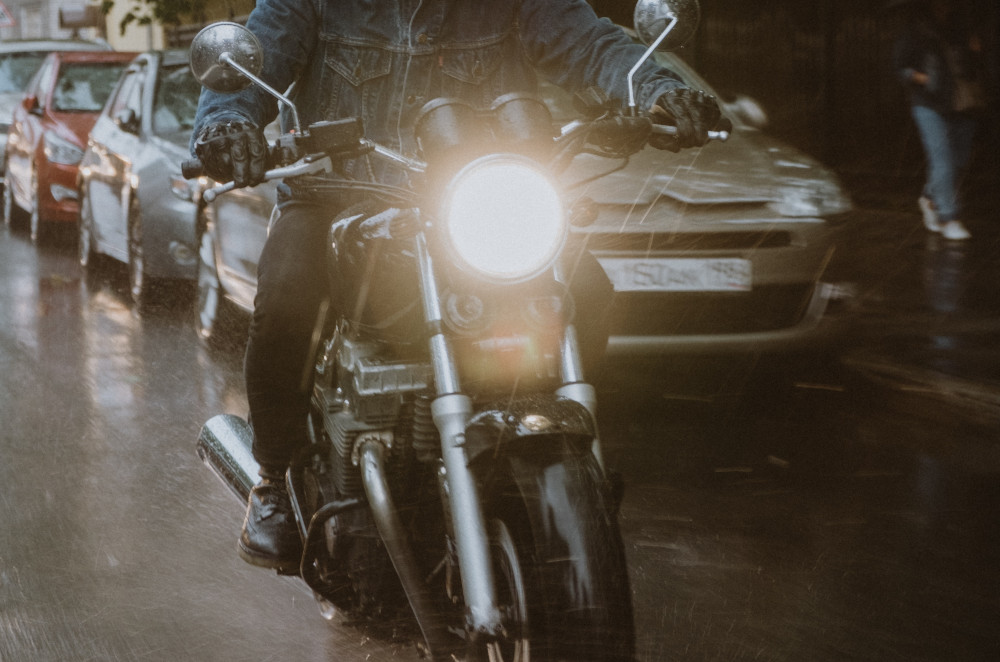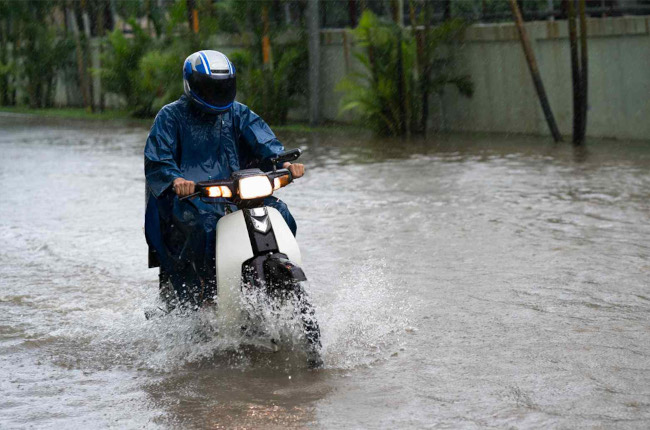Rain riding checklist—What to prepare for a stormy ride
Brace yourself for the storm.

Motorcycle riders in the Philippines are no stranger to inclement weather. Being a tropical country, rainy days are present in almost every month of the year and leave motorcyclists to fend for themselves through the downpour on urban and provincial roads. Facing stormy weather, however, is a lot easier when one is prepared, as preparation goes a long way in ensuring rider safety on all road conditions. If you’re wondering how you can best brace yourself for the winds, downpour, and water on the pavement, then you’ve come to the right place. Here are a few tips to help prepare yourself for a stormy ride out.
Read the forecast

If you know that you’ll be riding out on a rainy day, it will be of great help to check the forecast of the day. Forecasts won’t just tell you if there will be rain or not, but will also let you know which times of day will have the most rain, if the rains will be accompanied by strong winds, and if there will be thunder and lightning. Understanding the patterns of our weather will be very important in planning your route and setting expectations. If you’re preparing for strong rain, you may want to plan for one or two emergency stopovers along the way. If heavy winds are expected, you can plan your gear accordingly so as not to get dragged by the wind. If thunder or lightning will accompany your ride, you could plan your route to avoid vast and open landscapes. The same can be planned if you’re going through multiple cities or provinces on your ride, as weather characteristics may change as you traverse different areas.
Pre-ride check

Before heading out on the saddle, doing a quick check on your motorcycle will be of big help when riding out in the rain. The first thing you’ll want to check is your tire pressure. Ensure that your tires are inflated to the manufacturer’s recommended air pressure. If your tires are underinflated, this will cause poor excavation of the rain below your rubber and will make you more prone to hydroplaning, though some would say to let a little air out for a larger contact patch. Overinflated tires on the other hand should perform relatively well in the rain, however this will also cause excessive tire wear. Staying within the recommended air pressures will work wonders for grip and tire life. The next and last thing you’ll want to check would be the headlamp and taillight. A faulty lighting system will not only worsen your visibility in low-light and rainy conditions, but will also make you less visible to other motorists on the road. If you’ve got a busted light, you might want to quickly attend to that first in a repair shop before heading out.
Weather protection

If you’re looking to protect yourself from the rain and inclement weather, preparing rain gear can also work wonders if you’re looking for that extra convenience of not getting drenched. This would entirely depend on the appetite of the rider—some don’t mind getting wet, and some absolutely hate it. If you’re looking for light weather protection, some riding jackets and riding pants have inner liners which would work well for light rain. If you’re looking for full weather protection, a poncho for motorcycling or a full rain-proof overpant and a pullover rain jacket set would do the job of protecting you. Apart from protecting the torso and legs, you can also go a bit further by rainproofing your extremities. Rainproof riding boots can also be purchased to keep water from pooling up inside your shoes. Rainproof gloves make a great option if you want to avoid getting your hands wet, but a cheaper alternative would be to purchase medical latex gloves from a pharmacy and use it between your skin and gloves in order to keep your hands toasty.
Temperature management

Rainy days also often bring cooler weather, and as much as cool weather can often feel quite refreshing, weather that’s too cold can cause discomfort and poor physical control over the motorcycle. Rain gear in itself can already be a great tool for temperature management. Because rain gear doesn’t ventilate, the warm air around your body is kept inside the confines of your gear. The same is true for waterproof boots and waterproof gloves. If these won't cut it for you, it may be time to prepare with more protective clothing layers underneath your rain gear. If you’re traversing through high altitude areas with colder winds, you may want to take a jacket with you for extra warmth. Latex gloves can again be used to keep your hands toasty, and wrapping your feet with a plastic bag on top of your socks can also do the same trick of keeping your feet warm. You can also go back to your weather app to forecast the temperature for your route, and plan accordingly.
Visibility

With rain often comes poor visibility due to poorer natural lighting, reflections from puddles, light refraction from raindrops, and so much more. Because of this, providing yourself with as much visibility as possible on the road will do wonders for your stormy ride out. Starting with your helmet, ensuring that you have a clear shield installed will help feed a good amount of light into your eyes. You can take this a step further by applying a hydrophobic coating onto the exterior of your helmet face shield in order to prevent water droplets from beading and impairing your view of the road and surroundings. On top of this, you may also want to recheck your lighting system and consider a possible upgrade for your headlamp, or an addition of auxiliary lights for usage in provincial roads without street lamps. Yellow lights tend to provide better visibility in rain and fog as yellow light tends to reflect less than white lights.
Related Articles
-
4 bike-packing hacks for long adventures / Featured Article
Here are a few tips and tricks when it comes to packing for multi-day trips on your motorcycle
-
5 things that could save your life during a motorcycle-related emergency / Featured Article
Find out how you can help prepare yourself for a variety of emergencies on the road.
-
Can't ride your motorcycle because it's raining? Do these 4 things instead / Featured Article
Here’s a quick listicle of activities you can do if you can’t ride your motorcycle because of bad weather.
-
Here's why your next motorcycle should be an adventure bike / Tips & Advice
Thinking about purchasing your next motorcycle? Here’s why adventure bikes should be on your list.
-
Here's your rainy touring ride checklist / Featured Article
Here are 5 things you must remember if you plan on going on long rides in rainy weather.
Latest Features
-
Last-minute Christmas gift ideas for your rider friends and family / Featured Article
Struggling to think of gift ideas for your motorcyclist friends and family? Read on to get some inspiration this gift-giving season.
-
Ride a naked sportbike? Get these 5 upgrades first / Featured Article
Here’s a quick list of 5 upgrades to your naked sportbike to enhance your riding experience.
-
Motorcycle 101: The inner workings of a slipper clutch / Featured Article
Slipper clutches are awesome as they make for more forgiving downshifts and a lighter clutch lever. Let’s take a closer look at them and see how they work.








